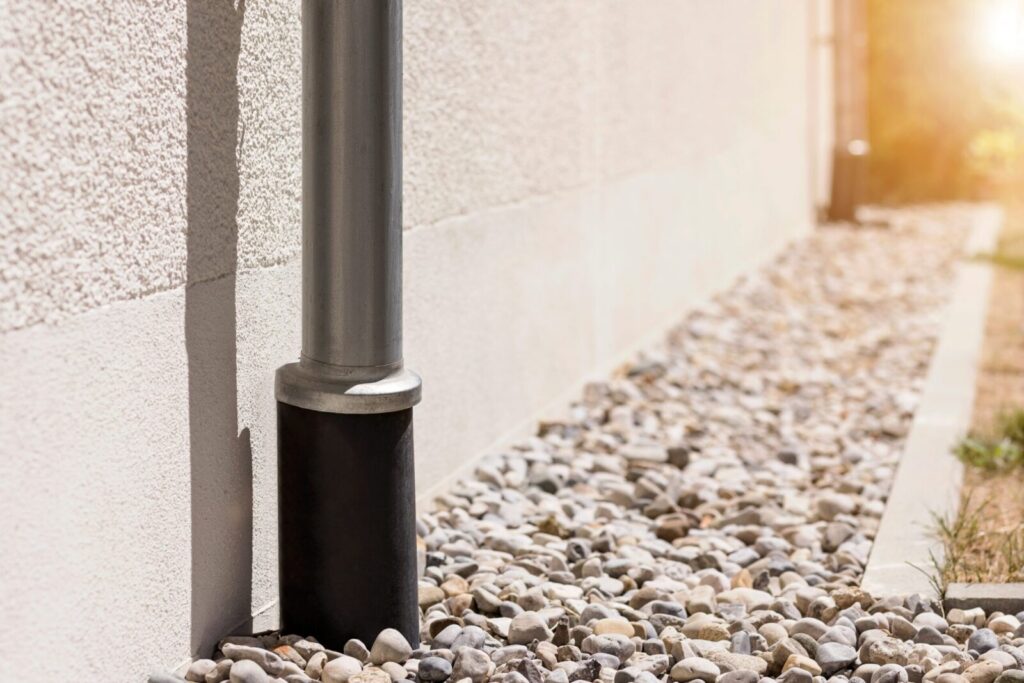Installing a French Drain to Protect Your Home from Pests
Excess water around your home can lead to serious issues, including water damage, mold growth, and pest infestations. One of the most effective and affordable solutions to address these problems is installing a French drain. Not only does it provide essential water control, but it also acts as a pest barrier, keeping your home safe and dry.
In this guide, we’ll explore why French drains are a smart investment, how they work, and how to install one in your yard.
Why Water and Moisture Attract Pests
Moisture is a common culprit behind pest problems. Rodents, termites, and mosquitoes thrive in damp environments, making standing water around your home a perfect breeding ground. This is where a French drain comes in. It channels excess water away from your home, preventing moisture from accumulating and eliminating the conditions that pests love.
By installing a French drain, you not only solve your water control problems but also significantly reduce the likelihood of pest infestations.
What Is a French Drain?
A French drain is a simple yet highly effective drainage system that helps redirect water away from your home’s foundation. It consists of a trench filled with gravel and a perforated pipe that channels water away from the affected areas. Some common issues that French drains solve include:
- Poor drainage around the foundation
- Basement flooding or dampness
- Standing water in your yard
- Foundation cracks caused by water pressure
With a French drain, you’ll enjoy a dry, pest-free environment and protect your property from water-related damage.
Why Choose a French Drain?
Here are a few reasons why French drains are a cost-effective and efficient solution for your home:
- 🛡️ Protects Your Foundation: By redirecting water away from your home, French drains reduce pressure on your foundation, helping prevent cracks and structural damage.
- 🐜 Pest Barrier: A dry environment is less inviting to pests like rodents, termites, and mosquitoes, reducing the risk of infestations.
- 🌿 Protects Your Lawn: Water redirected from your yard helps prevent soil erosion and supports healthy landscaping.
- 💰 Cost-Effective: French drains are an affordable way to solve drainage issues, potentially saving you thousands of dollars on water damage repairs and pest control.
How to Install a French Drain
While you can hire a professional for the installation, many homeowners successfully install French drains themselves. Here’s a simple breakdown of the installation process:
- Plan the Drainage Path
- Choose the lowest point in your yard and make sure the drain discharges water far from your foundation.
- Dig the Trench
- The trench should be 18–24 inches deep and 6 inches wide, sloping at least 1 inch per 10 feet to allow water to flow properly.
- Add Gravel and Pipe
- Line the trench with landscape fabric, add a 4-inch perforated pipe with the holes facing downward, and cover the pipe with gravel for proper drainage.
- Seal and Cover
- Wrap the top of the trench with landscape fabric, then cover with soil or sod for a clean, inconspicuous finish.
Signs You Need a French Drain
If you notice any of the following issues, a French drain might be the solution:
- Water pooling around your foundation
- Basement flooding or dampness
- Foundation cracks or mold growth
- Pest activity in wet areas
- Standing water in your yard after rainfall
A French drain will efficiently address these problems and protect your home from further damage.
Cost-Effectiveness of a French Drain
French drains offer significant savings when compared to the costs of repairing water damage, foundation issues, or dealing with pest infestations. Here’s a breakdown of costs:
- DIY Cost: $10–$20 per linear foot
- Professional Installation: $25–$50 per linear foot
- Potential Savings: Thousands of dollars in repair and pest control costs
By installing a French drain, you’ll not only protect your home but also avoid costly repairs and maintenance in the future.
When to Call in a Professional
While installing a French drain is a manageable DIY project, you may need professional help in certain situations:
- Complex or large drainage issues
- Poor soil grading or existing foundation damage
- Need for additional systems like sump pumps
A professional contractor can assess your yard’s drainage needs and design a custom solution that ensures the best results.
Final Thoughts
A French drain is one of the best investments you can make to protect your home from water damage and pest infestations. With its ability to provide water control and act as a pest barrier, it’s an affordable, long-term solution to keep your property safe and dry.
Stop waiting for water damage or pests to cause costly repairs. Install a French drain today and enjoy a healthier, safer living space for years to come.

